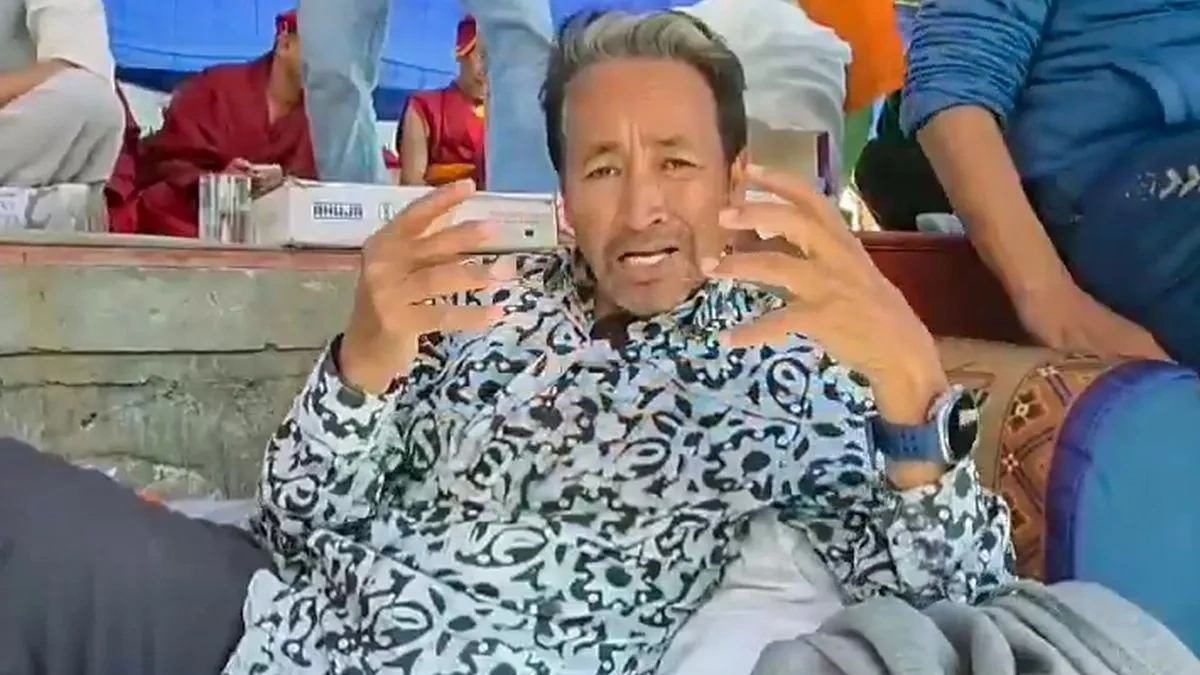Why Sonam Wangchuk’s ‘Arrest’ is a Wake-Up Call for India
Okay, let’s address the elephant in the room. You’ve probably seen the headlines: Sonam Wangchuk arrested . But, hold on a second. Before you jump to conclusions, let’s unpack what’s really going on here. This isn’t your typical crime story; it’s a powerful statement, a carefully orchestrated act of defiance, and a desperate plea for the fragile ecosystem of Ladakh. Think of it less as an arrest and more as a spotlight a spotlight shining on the critical issue of environmental protection in the face of rapid industrialization and climate change.
I initially thought this was straightforward another activist facing the consequences of dissent. But then I dug deeper, read between the lines, and realized the layers of complexity involved. This isn’t just about one man; it’s about a movement, a region, and a future hanging in the balance. It’s a story that needs to be understood, not just reported.
The ‘Arrest’ | A Calculated Act of Civil Disobedience

Here’s the thing: Wangchuk wasn’t exactly hauled away in handcuffs after a violent confrontation. The “arrest,” as it’s being called, stems from his defiance of a prohibitory order under Section 144 CrPC, preventing gatherings. He planned to address a public gathering about the alarming rate at which glaciers are melting in Ladakh, and the administration was trying to prevent that gathering. Let me rephrase that for clarity: his ‘crime’ was wanting to talk about a melting glacier, which tells you almost everything you need to know. He and his supporters peacefully courted arrest. This was deliberate, a carefully planned act of civil disobedience designed to draw attention to a pressing issue. Think Gandhi, but with a PhD in engineering and a deep love for the Himalayas.
And why this act of defiance? Because Wangchuk believes that unchecked industrial expansion and tourism are pushing Ladakh to the brink. According to various reports and Wangchuk’s own statements, the region’s fragile ecosystem is struggling to cope with the pressures of development. This raises a crucial question: how do we balance economic progress with environmental sustainability? It’s a question not just for Ladakh, but for India as a whole. This act of defiance is a challenge to the government to prioritize the environment. Read more about similar challenges.
Ladakh’s Fragile Ecosystem | A Canary in the Coal Mine
What fascinates me is the interconnectedness of it all. Ladakh isn’t just some remote, icy desert; it’s a vital part of the Himalayan ecosystem, which affects the entire Indian subcontinent. The glaciers are the source of crucial rivers, providing water for agriculture and drinking water to millions of people downstream. The melting glaciers, a key concern highlighted by Wangchuk, aren’t just an environmental problem; they are a threat to water security, food security, and the overall well-being of countless communities.
And here’s where the ‘ climate change Ladakh ‘ element kicks in. The region is experiencing accelerated warming, leading to glacial melt at an alarming rate. This isn’t just about rising temperatures; it’s about changing weather patterns, unpredictable rainfall, and increased risk of natural disasters. The local communities, who have lived in harmony with the environment for centuries, are now facing unprecedented challenges. We need to address the key question of ‘ Ladakh environmental impact ‘.
According to a study by the Indian Institute of Science, the glaciers in the Ladakh region are shrinking at an alarming rate. This is not just some abstract scientific data; it’s a real threat to the livelihoods of the people who depend on these glaciers for their water supply. It also reflects the increasing ‘ environmental concerns Ladakh ‘ is facing.
The Bigger Picture | Development vs. Sustainability
But, let’s be honest. Development is important. People need jobs, infrastructure, and economic opportunities. The challenge lies in finding a sustainable path to development, one that doesn’t come at the expense of the environment. This is where innovative solutions, like the ones Wangchuk himself has pioneered, become crucial.
Wangchuk is not just an environmental activist; he’s an innovator, an educator, and a visionary. His work in creating ice stupas artificial glaciers that provide water during the dry season is a testament to his ingenuity and his commitment to finding practical solutions. It’s about harnessing technology to address the challenges posed by climate change. Moreover, the increasing ‘ tourism impact Ladakh ‘ needs to be mitigated with sustainable tourism practices.
A common mistake I see people make is to frame this as a simple ‘environment vs. development’ debate. It’s much more nuanced than that. It’s about finding a balance, about prioritizing long-term sustainability over short-term gains. And that requires a fundamental shift in our thinking.
What Can We Learn From This?
So, what’s the takeaway from all this? Sonam Wangchuk’s ‘arrest’ isn’t just a news story; it’s a symbol. It’s a symbol of the growing tension between environmental protection and economic development. It’s a symbol of the urgent need for sustainable solutions in the face of climate change. And it’s a symbol of the power of peaceful resistance in the face of injustice.
And it raises a crucial question for all of us: What can we do? How can we support sustainable development? How can we amplify the voices of those who are fighting to protect our planet? The answer, I believe, lies in awareness, in action, and in a collective commitment to a better future. Let us address and understand the ‘ Ladakh ecological balance ‘.
According to the official Ladakh Autonomous Hill Development Council (LAHDC) website, the council is committed to promoting sustainable tourism and responsible development in the region. While the intentions are good, the implementation needs to be more robust and effective.
This incident highlights the urgent need to discuss the ‘ Section 144 CrPC Ladakh ‘.
Ultimately, Wangchuk’s ‘arrest’ is a reminder that environmental protection is not just a responsibility of governments and organizations; it’s a responsibility of each and every one of us. We can make informed choices about our consumption habits. We can support businesses that prioritize sustainability. And we can raise our voices to demand change. Learn more about India’s cultural heritage.
FAQ Section
Frequently Asked Questions
What exactly was Sonam Wangchuk arrested for?
He wasn’t “arrested” in the traditional sense. It was a peaceful act of civil disobedience for violating Section 144 CrPC by planning a public gathering to discuss glacial melt.
Why is glacial melt a problem in Ladakh?
The glaciers are the primary source of water for the region. Their melting threatens water security, agriculture, and the livelihoods of local communities.
What is Section 144 CrPC?
Section 144 of the Criminal Procedure Code (CrPC) empowers a magistrate to prohibit gatherings of four or more people in an area.
What can I do to support sustainable development in Ladakh?
You can support eco-friendly tourism, donate to organizations working on environmental conservation, and raise awareness about the issues facing the region.
Where can I find more information about Sonam Wangchuk’s work?
You can find information on his official website and through various news articles and documentaries about his work on ice stupas and sustainable development.
How does climate change impact Ladakh specifically?
Ladakh is experiencing accelerated warming, leading to glacial melt, changing weather patterns, and increased risk of natural disasters, severely impacting the region’s ecological balance.













